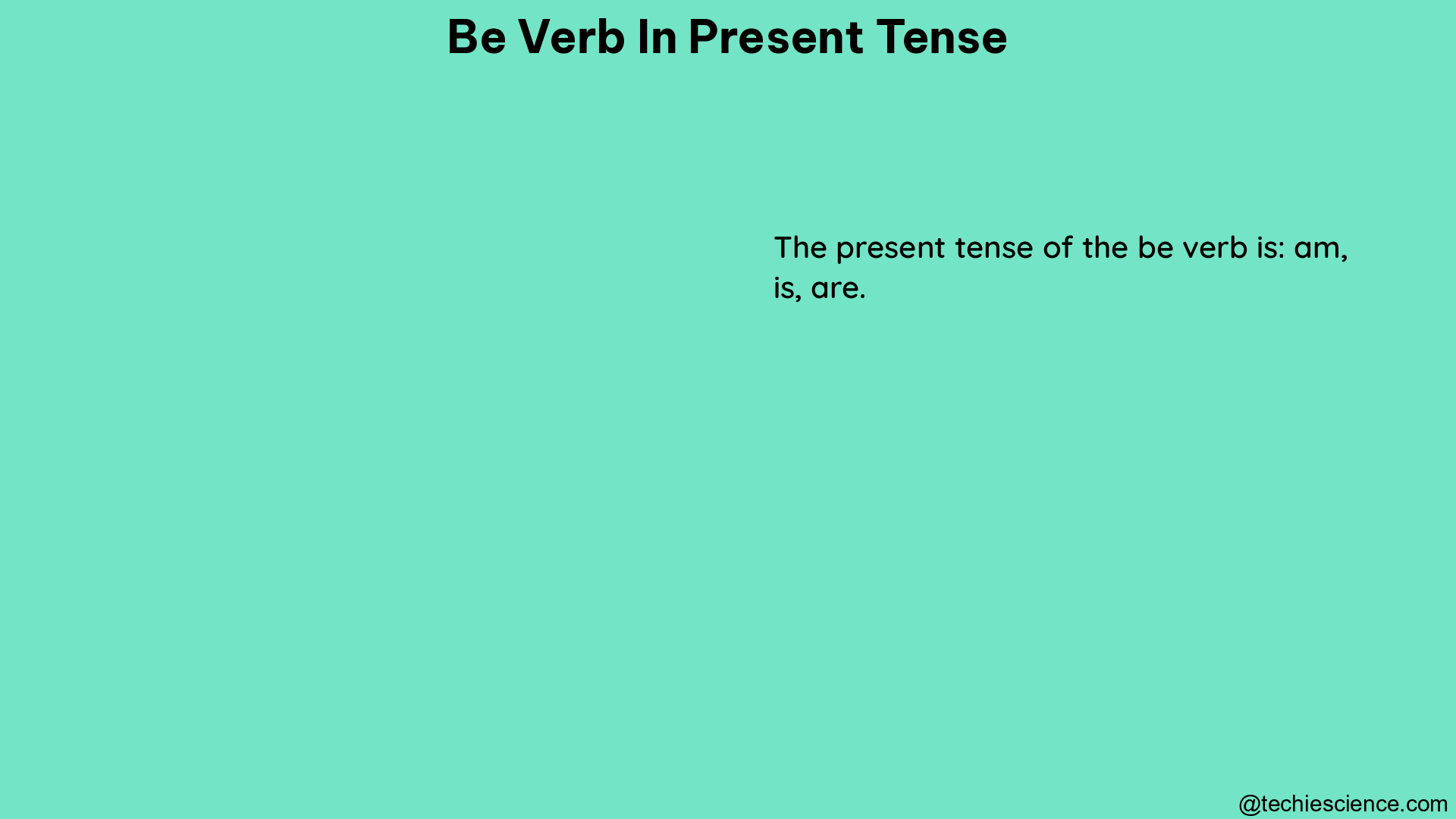The “be” verb is a fundamental part of English grammar, and understanding its usage in the present tense is crucial for effective communication. This comprehensive guide will delve into the various forms, examples, and nuances of the “be” verb in the present tense, providing you with a thorough understanding of this essential linguistic tool.
Present Tense Forms of “To Be”
The present tense forms of the “be” verb are as follows:
| Person | Form |
|---|---|
| First Person Singular (I) | am |
| Second Person Singular (You) | are |
| Third Person Singular (He, She, It) | is |
| First Person Plural (We) | are |
| Second Person Plural (You) | are |
| Third Person Plural (They) | are |
These forms are used to express the current state or condition of a subject, and they are crucial for constructing grammatically correct sentences in the present tense.
Examples of “To Be” in Present Tense

Affirmative Sentences
- I am from New Zealand.
- You are Chilean.
- He is twenty years old.
- She is a nurse.
- It is a big dog.
- We are intelligent.
- You are students.
- They are married.
Contractions
- I am = I’m
- You are = You’re
- He is = He’s
- She is = She’s
- It is = It’s
- We are = We’re
- You are = You’re
- They are = They’re
Negative Sentences
- I am not from Spain.
- You are not Australian.
- He is not thirty years old.
- She is not a teacher.
- It is not a big dog.
- We are not intelligent.
- You are not students.
- They are not married.
Word Order and Questions
Word Order
The standard word order for sentences using the “be” verb in the present tense is:
Subject + verb + object
For example:
– She is a teacher.
– We are students.
Forming Questions
To form questions using the “be” verb in the present tense, the verb is moved to the beginning of the sentence:
- Am I a student?
- Are we students?
- Is she clever?
Using “To Be” in Negative Sentences
There are two ways to form negative sentences with the “be” verb in the present tense:
Using “not”
Place “not” after the “be” verb:
– I am not a student.
– You are not a doctor.
– She is not a teacher.
Using Contractions
Use the shortened forms of “to be” and “not”:
– He is not = He isn’t
– They are not = They aren’t
Practice Exercises
Practice using the “be” verb in the present tense with the following examples:
- To be glad
- To be busy
- To be married
- To be single
- To be lucky
- To be ready (for)
Additional Tips
Practice
The best way to improve your mastery of the “be” verb in the present tense is to practice using it in various contexts and scenarios. Engage in conversations, write sentences, and immerse yourself in the language to solidify your understanding.
Online Resources
Utilize online English courses, grammar guides, and interactive exercises to reinforce your learning and deepen your knowledge of the “be” verb in the present tense.
Reference Links
- Grammarly Blog: The Verb “To Be” Explained, With Examples
- Grammar CL: To Be in Present Tense – Learn English Grammar
- Talk English: Simple Present Tense – Be Verbs – Learn English Grammar

Hi…..I’m a graduate with a Bachelor’s degree in English Literature. I wish to do a Masters in the same field someday and continue my career in Academia.
Let’s connect through LinkedIn: